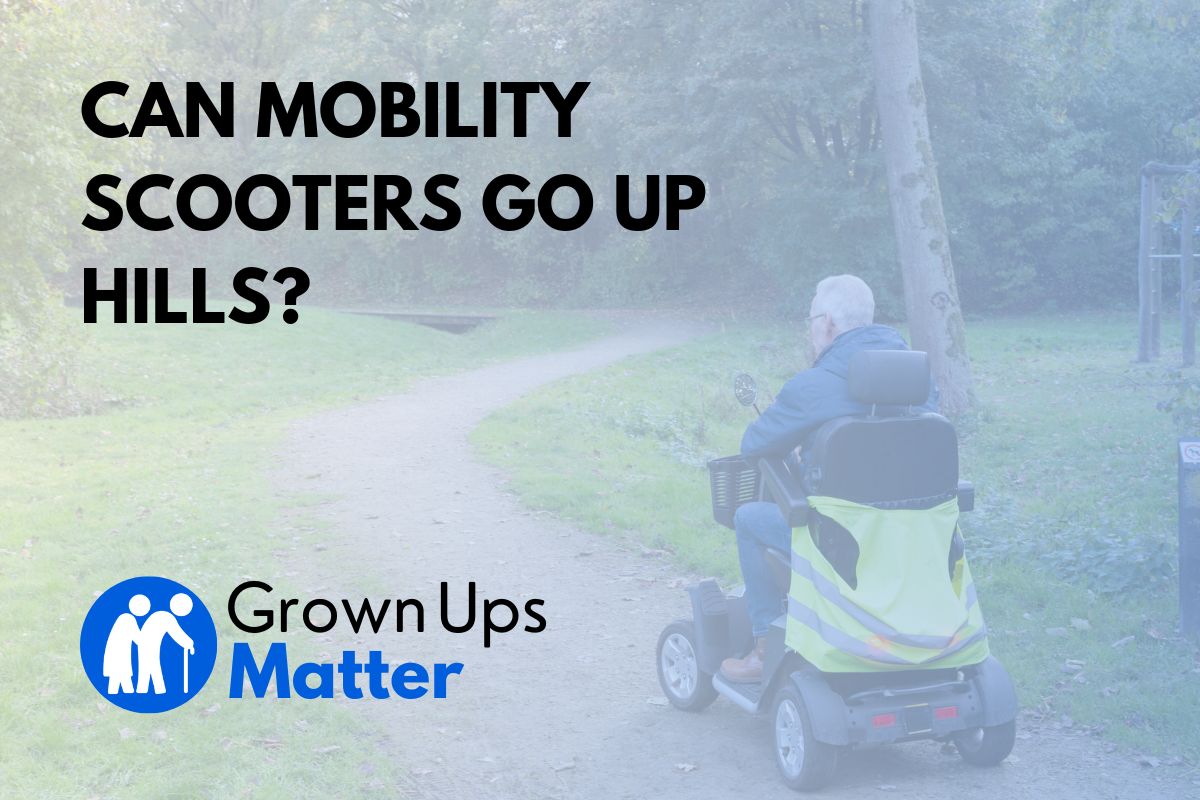Mobility scooters are an indispensable tool for many individuals experiencing mobility challenges.
These handy devices provide a degree of independence and freedom that can greatly enhance a person’s quality of life.
However, one question that arises when considering purchasing or using a mobility scooter is, “Can mobility scooters go up hills?”
The answer is yes, with a few caveats.
Most mobility scooters are designed to manage inclines to a certain degree, but the steepness of the slope, the scooter’s specific features, and the user’s weight all factor into its hill-climbing capabilities.
This article will delve into the nuances of this question, providing you with comprehensive insights into the hill-climbing capabilities of mobility scooters.
Key Takeaways
- Mobility scooters can handle inclines: To an extent, mobility scooters are designed to manage inclines. The extent to which they can depends on factors such as the steepness of the slope, the scooter’s power and features, and the weight of the user.
- Gradient matters: The steeper the incline, the more power a mobility scooter needs. The maximum gradient a mobility scooter can handle usually ranges between 6 and 12 degrees.
- Scooter specifications are crucial: The power of the motor, the type and quality of the tires, and the scooter’s weight capacity can significantly affect its ability to climb hills. Certain features can enhance a scooter’s hill-climbing capabilities.
- Hill-climbing drains the battery: Climbing hills requires more power, which can drain the battery faster. Consider this when planning your journey and always ensure your battery is fully charged before embarking on hilly routes.
- Not all obstacles are conquerable: While mobility scooters can manage slopes and small curbs, they are not designed to climb stairs or very steep ramps. Extreme caution should be exercised on challenging terrains to avoid tipping over.
Can Disability Scooters Climb Hills?
The ability of a mobility scooter to climb hills depends largely on its power and specifications, the weight of the user, and the steepness of the hill. Most models, particularly those classified as class 2 or class 3 mobility scooters, are designed to handle a reasonable gradient. However, it’s essential to consult the specifications of the specific model you’re considering, as these will provide a more accurate indication of its hill-climbing capabilities.
While many types of mobility scooters exist, not all are designed for hill-climbing. Some lightweight, compact models designed for indoor use or smooth, flat surfaces may struggle with inclines. Therefore, if you live in a hilly area or regularly traverse slopes, it’s crucial to select a scooter designed for such conditions.
Maximum Slope Mobility Scooters Can Climb
Typically, mobility scooters can manage gradients ranging from 6 to 12 degrees. This is equivalent to a rise of approximately one meter for every ten meters traveled (1:10 ratio) at the lower end and one meter rise for every five meters traveled (1:5 ratio) at the higher end.
However, keep in mind that these are general guidelines and can vary based on the scooter’s power, the user’s weight, and other factors. Always refer to your scooter’s user manual or consult the manufacturer for specific information regarding your scooter’s maximum slope capacity.
Moreover, remember that gradient isn’t the only consideration when assessing a hill’s suitability for a mobility scooter. The hill’s surface quality, the presence of obstructions, and whether there are safe areas to rest if needed should also be considered.
Personal Scooter Features That Make Climbing Hills Easier
Certain features can enhance a mobility scooter’s hill-climbing capabilities:
- Powerful Motor: A robust motor can provide the additional push needed to handle steeper inclines.
- High-Quality Tires: Good tires can provide better traction and control, crucial for navigating slopes.
- Sturdy Frame: A well-built, stable frame can increase the scooter’s overall stability, particularly when tackling inclines.
- Weight Capacity: The scooter’s weight capacity also plays a crucial role. Heavier users might need a scooter with a higher weight capacity for efficient hill-climbing.
Remember that these features can also affect the cost of a mobility scooter, so consider your budget and needs carefully when making your selection. Also, don’t forget to consider other important factors such as battery life, comfort, and ease of use.
Best Mobility Scooters for Going Up Hills
There are several mobility scooters on the market that have been designed specifically to navigate slopes effectively. These often feature a more powerful motor, larger wheels, and advanced suspension systems to ensure a smooth and safe ride, even on inclines.
To start, the Pride Mobility Victory 10 4-Wheel Scooter is renowned for its exceptional hill-climbing capability. It boasts a high ground clearance and an impressive 400lb weight capacity, making it a popular choice for outdoor use.
Next, the Drive Medical Phoenix HD 4 also stands out with its robust design and non-marking, anti-tip wheels. Its combination of comfort, performance, and sleek style make it an ideal scooter for hilly terrains.
Lastly, the Golden Technologies Buzzaround XLS HD offers a 325lb weight capacity and a maximum speed of 4 mph. Its excellent suspension system and increased foot room guarantee a comfortable ride over uneven surfaces.
While these are some popular choices, remember to consider other factors such as user weight, desired speed, comfort features, and budget before making a purchase. A detailed look at the best mobility scooter brands can guide you in finding the perfect scooter for your needs.
Climbing Hills Will Drain Your Battery Faster
Despite the prowess of some scooters in tackling hills, it’s essential to understand that inclines can significantly impact your scooter’s battery life. Climbing hills requires more energy from the scooter, which means the battery drains quicker than when traversing flat surfaces.
Therefore, if you frequently travel in hilly areas, you might want to invest in a model with a larger battery capacity or carry a spare battery. Regular battery checks can also ensure you are never caught off guard. For more tips on maintaining and extending your battery’s life, explore the comprehensive guide on mobility scooter battery care.
Can Mobility Scooters Climb Curbs?
While mobility scooters are impressively versatile, they are typically not designed to climb curbs. Even the models best suited for outdoor use usually have a maximum obstacle height they can surmount, and this is generally much smaller than the height of a standard curb.
However, some mobility scooters have been engineered with larger wheels and more ground clearance, which can tackle smaller curbs. Before attempting to mount a curb, ensure it’s within your scooter’s capabilities to avoid accidents and damages.
Can Mobility Scooters Climb Wheelchair Ramps?
Yes, mobility scooters can generally handle wheelchair ramps. However, the scooter’s ability to climb ramps will depend on the steepness of the incline and the scooter’s specifications. For instance, lighter scooters with small motors might struggle with steeper slopes.
Before you decide to navigate a wheelchair ramp, it is important to check the mobility scooter’s slope climbing ability and compare it to the gradient of the ramp.
Can Mobility Scooters Go Up Stairs?
In general, mobility scooters are not designed to climb stairs. The scooter’s structure, center of gravity, and lack of necessary traction make it unsafe and impractical for such a task.
If you require a mobility aid that can navigate stairs, you might want to consider devices like stairlifts or wheelchair stair climbers, which are specially designed for this purpose.
Can Mobility Scooters Tip Over?
While mobility scooters are designed with stability in mind, they can tip over under certain conditions.
Sharp turns, traveling at high speeds, and navigating uneven or sloped terrain can potentially cause a scooter to tip.
4-wheel scooters generally offer more stability than their 3-wheel counterparts.
However, it’s crucial for users to understand their scooter’s limitations and operate them within those boundaries.
Refer to the mobility scooter safety guide for more detailed tips on safe scooter usage.
Remember, safety should always come first.
If you ever feel unstable or unsafe, slow down, stop, and reassess the situation.
Ensure that you are always in control of your scooter and are familiar with its functionalities and capabilities.
All the claims made in this article are only for informational purposes, based on the writer’s experience and not clinical advice. You should always consult your physician or physical therapist if you have any doubts about how this applies to your specific case.

Rami is an economist with a passion for personal finance and a desire to help people make the most of their retirement years. He’s also the tech mind that made all of this possible, and a marketing enthusiast. In his articles, Ramiro offers real-life advice and resources for seniors looking to manage their finances and make the most of their retirement savings. He is dedicated to helping his readers live comfortably and securely during their golden years.

